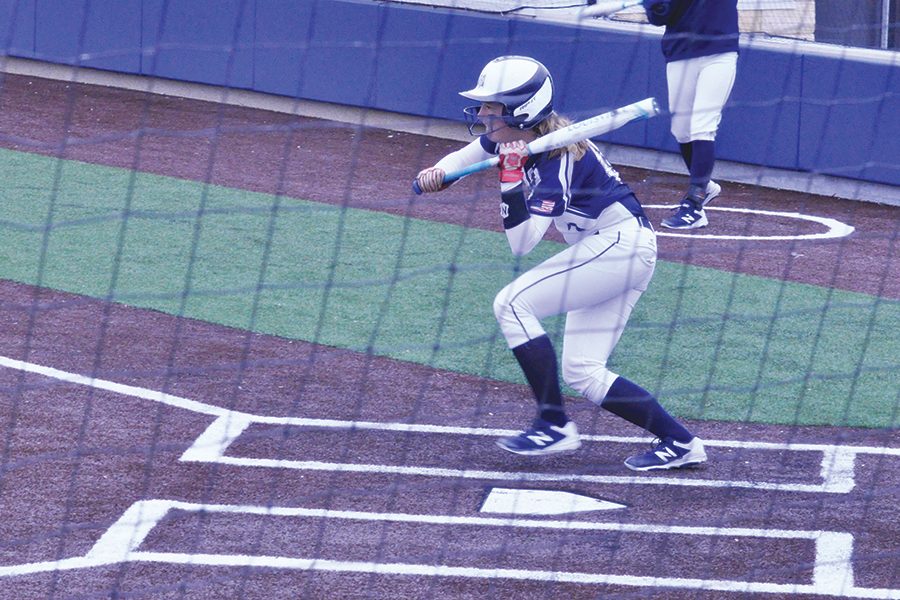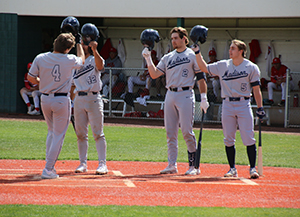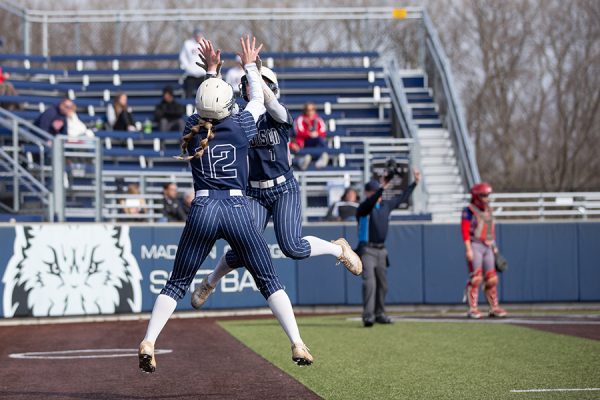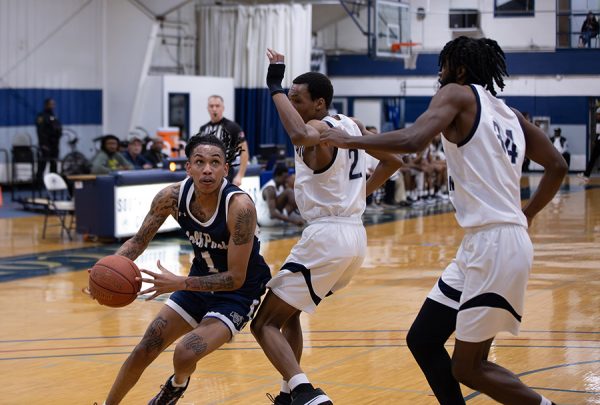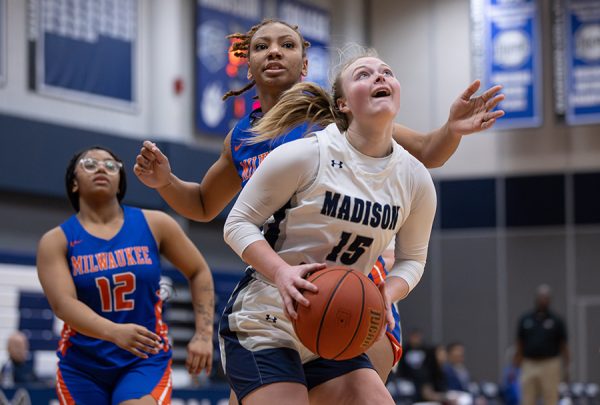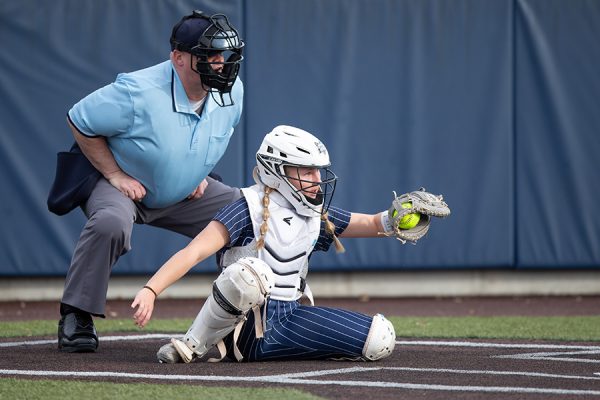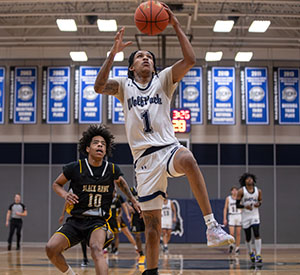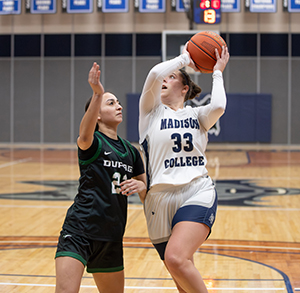The art of slapping: Technique puts softball players on the fastest path to first base
Madison College softball player Brenna Seeber pulls back on a slap hit attempt during a recent game.
April 18, 2017
If you’re a baseball fan and haven’t been exposed to college softball, you might find the concept of “slapping” confusing. In baseball, no player gets a running start to hit the ball. And drag bunts are few, and far between.
What is slapping? Well, according to Madison College assistant coach Mike Bridge, it’s just another way of hitting.
“The goal is to get to first base quicker,” he said.
This is achieved by batting left-handed, using a running start, hitting the ball, and being full speed toward the base, right after contact.
Some say that there is a trade-off of power, because when a slapper hits the ball, It often doesn’t leave the infield. However, if done right, it increases the average of the hitters, by making the defense have to make plays faster.
Slapping is a common technique, utilized by the faster players. They are required to read the defense, and then use one of three swings.
A drag bunt is just a running bunt.
You drop your hands down the barrel of the bat and try to get the ball over to the third base side. You use this swing if the third basemen does not charge the plate when she sees your run-up.
The second swing is the push bunt.
You let your hands fall to the top of the grip to create a shorter swing. Then, you try to hit the ball past the pitcher, between the charging third basemen and the shortstop. This swing is quick and compact.
The third style is the power slap.
This is used when both the shortstop and the third basemen are charging. You would do a full swing, keeping your hands in the normal positions. You might want to put some air under the ball to lift it over the infield, but not enough to let your hit become a pop- fly. This is also the most common of the slapping techniques.
The second hardest part of slapping is the footwork. It’s not as easy as some of the Madison College softball girls make it look.
First, all slapping is done left-handed. So, for players like Brenna Seeber and Ashley Burg, who throw righty, it is not their natural side.
However, the hands are not the hardest part. That would be the feet.
With your right (forward) foot, the first move is back. You use this step to generate power and stability for your next step, which is your left foot.
The second step is the most important. It is imperative that you point your toes at almost a 90-degree angle away from your body, and toward the third basemen. A good slapper also keeps their hips closed until the last step, when the right foot comes through again. This time your toe should still be pointed about where you want the ball to travel.
A good slapper keeps their hips closed until they burst for first base. This is usually what defines the best slappers from the rest. They also know how to place the ball. If the batter is fast enough, a ball hit to the left side of the infield, with the proper swing technique, should almost always put you on first base.
“The hardest part about slapping is getting the right read of the defense,” said Bridge.
A strong hitter is good at all three types of slapping – the drag bunt, the push bunt, and the power slap. If they can read the defense and execute the swing, there is almost no way to get a good slapper out.

